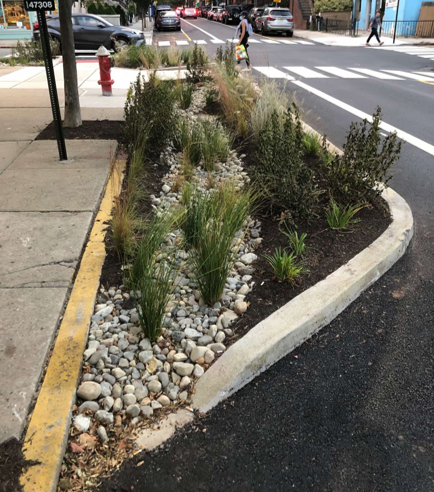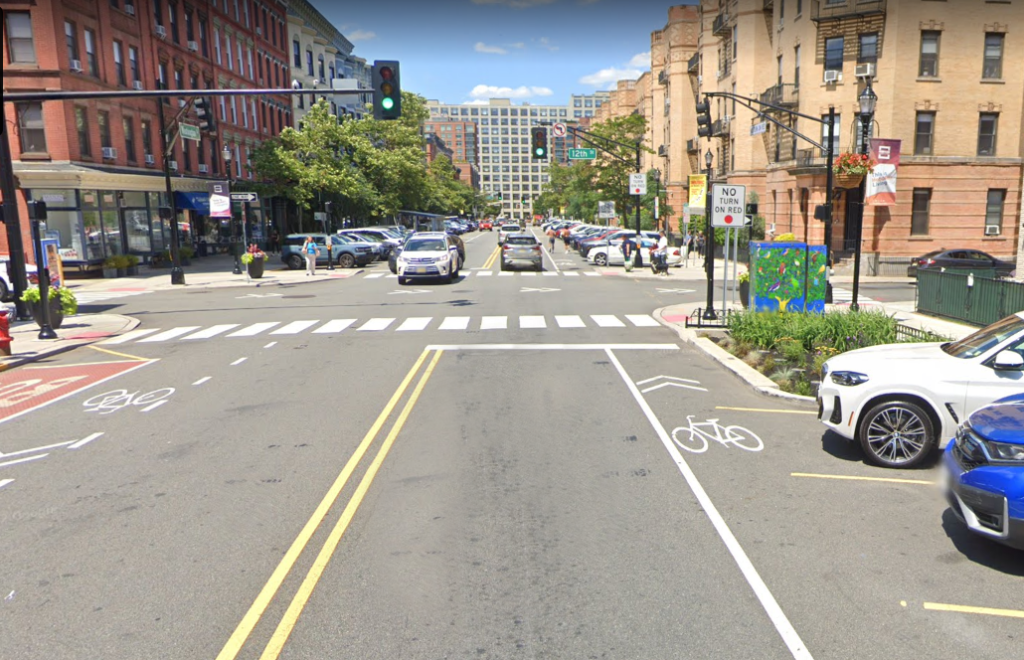With the passage of the Bipartisan Infrastructure Law (BIL) in 2021, the federal government has green-lighted several new streams of funding for infrastructure projects. Among the new programs is the Promoting Resilient Operations for Transformative, Efficient, and Cost-saving Transportation (PROTECT) grant program. PROTECT provides funding to ensure surface transportation resilience to natural hazards including climate change, sea level rise, flooding, extreme weather events, and other natural disasters. States, MPOs, and county and local governments are among the eligible applicants for this program. The Notice of Funding Opportunity (NOFO) is now available for the current round of applications here. Applications are due on August 18, 2023.
There are four categories of competitive grants available through the discretionary program, which is separate from the formula funds distributed to states.
- Planning Grants do not require a local match and may be used to develop a Resilience Improvement Plan. Having a Resilience Improvement Plan institutionalized at the state or MPO level qualifies applicants for a lower local match.
- Resilience Improvement Grants may be used to improve resilience to natural disasters, sea-level rise, extreme weather events, or the impacts of changing conditions due to climate change.
- Community Resilience and Evacuation Route Grants may be used to strengthen and protect evacuation routes, expand the capacity of evacuation routes, or create alternative evacuation routes.
- At-Risk Coastal Infrastructure Grants are limited to applicants in coastal states and territories and may be used to strengthen, protect, or otherwise enhance the resilience of highways or other non-rail infrastructure that face long-term future risks from sea-level rise.

Figure 1: This bioswale–a type of rain garden–in Hoboken, NJ is designed to help reduce flooding in the neighborhood during heavy rainfall (source: City of Hoboken, NJ)
Resilience Improvement Grants, Community Resilience and Evacuation Route Grants, and At-Risk Coastal Infrastructure Grants all have a base local match of 20 percent, but match discounts can reduce the local match requirement to as low as 10 percent. More information is available here: https://www.transportation.gov/rural/grant-toolkit/promoting-resilient-operations-transformative-efficient-and-cost-saving
While PROTECT focuses primarily on climate resilience, the infrastructure built with these grants may also make streets safer. The USDOT and NJDOT both highlight traffic safety and the reduction of the number of traffic deaths as top priority goal, so it makes sense that all projects—in some way or another—are safety projects. The NOFO encourages applicants to use nature-based solutions to help mitigate the impacts of more extreme weather events. New Jersey has long known of the benefits of large wetland areas, which absorb stormwater like a large sponge and help mitigate some of the most devastating impacts of heavy rainfall. Recently, the City of Hoboken installed different types of rain gardens that mimic the absorptive properties of wetlands.
During heavy downpours, rain gardens along streets absorb large amounts of stormwater, reducing the strain on sewer systems. However, these gardens also have a second function; they make streets safer for pedestrians. Hoboken was strategic in where they installed rain gardens, using them as curb extensions. As such, they shorten the crossing distance across, force motorists to turn more slowly, and eliminate illegal parking within 25 feet of the crosswalk. All three of these impacts make the street safer for everyone using it.
Rain gardens, such as those used in Hoboken, and other green infrastructure are a key example of the nature-based solutions that the PROTECT program encourages towns to implement to make communities more resilient to climate change and more extreme weather events. At the same time, implementing green infrastructure strategically can also produce added safety benefits for all road users.
There are different types of nature-based solutions that could be useful for reducing stormwater runoff, many of which provide opportunities to additionally help make roads safer for vulnerable road users. Green infrastructure provides ecological and aesthetic enhancement while also making a more pleasant street environment for bicycling and walking. The National Association of City Transportation Officials (NACTO) produced their Urban Street Stormwater Guide in 2017 to describe the different infrastructure available for managing stormwater within cities.

Figure 2: Curb extension with a rain garden along Washington Street in Hoboken, NJ (source: Google StreetView)
Green infrastructure designed for stormwater management aims to do one or more of the following:
- Detention – the facility collects and holds stormwater runoff in temporary storage facilities, such as underground, under-street, and off-street storage cisterns—or vegetated systems before slowly releasing the water into the downstream system.
- Retention – the facility captures and holds stormwater on-site to reduce runoff into sewer systems. Water is then evaporated, transpired, or infiltrated through the soil.
- Filtration – the facility removes debris, particulate matter, and other pollutants by filtering runoff through gravel, sand, soil, or other filter.
- Infiltration – the facility absorbs stormwater through the ground surface and into the soil.
Rain gardens are one of the most common types of green infrastructure and they come in many forms, depending on the needs of the urban context. They vary to meet the availability of street space, traffic and pedestrian density, stormwater retention needs, and construction cost. These include bioretention planters, biofiltration planters, bioretention swales (bioswales), and hybrid bioretention planters. Bioswales are less costly to construct than bioretention and biofiltration planters, but they also take up more space on the street. The NACTO guide provides recommended dimensions, as well as design and siting considerations.
Street trees are already present in many New Jersey cities; however, many of the existing street trees miss the opportunity to also provide additional ecological benefits as stormwater trees. Healthy trees have a large capacity to transpire water, intercept rainfall, and treat water quality. Additionally, street trees have traffic calming effects. Tree pits should provide enough root space to allow their trees to have strong root systems and to avoid buckling nearby streets, sidewalks, and building foundations. Enhanced tree pits have inlets to allow stormwater to enter the pit instead of flowing into the sewer system.
Another green infrastructure option is permeable pavement, which may replace concrete or asphalt in some locations to reduce the amount of impermeable surface on a road or sidewalk. Permeable pavement allows some stormwater to infiltrate directly, reducing the amount of runoff that goes into the sewer system.
As the New Jersey region continues to see increasingly intense rainfall events, it is important to understand the various strategies available to reduce the risk of harm to communities and their infrastructure. Traditional transportation systems consist largely of impervious surfaces in its roads, sidewalks, and off-street parking lots. Reducing the amount of impervious surfaces, especially with high-impact nature-based solutions, can help relieve stress on existing storm sewers, reducing the risk of inundation, flash flooding, and waterway erosion. These types of strategies are being used across the state to lessen the impact of storms – and to improve traffic safety at the same time.
By Greg Woltman
